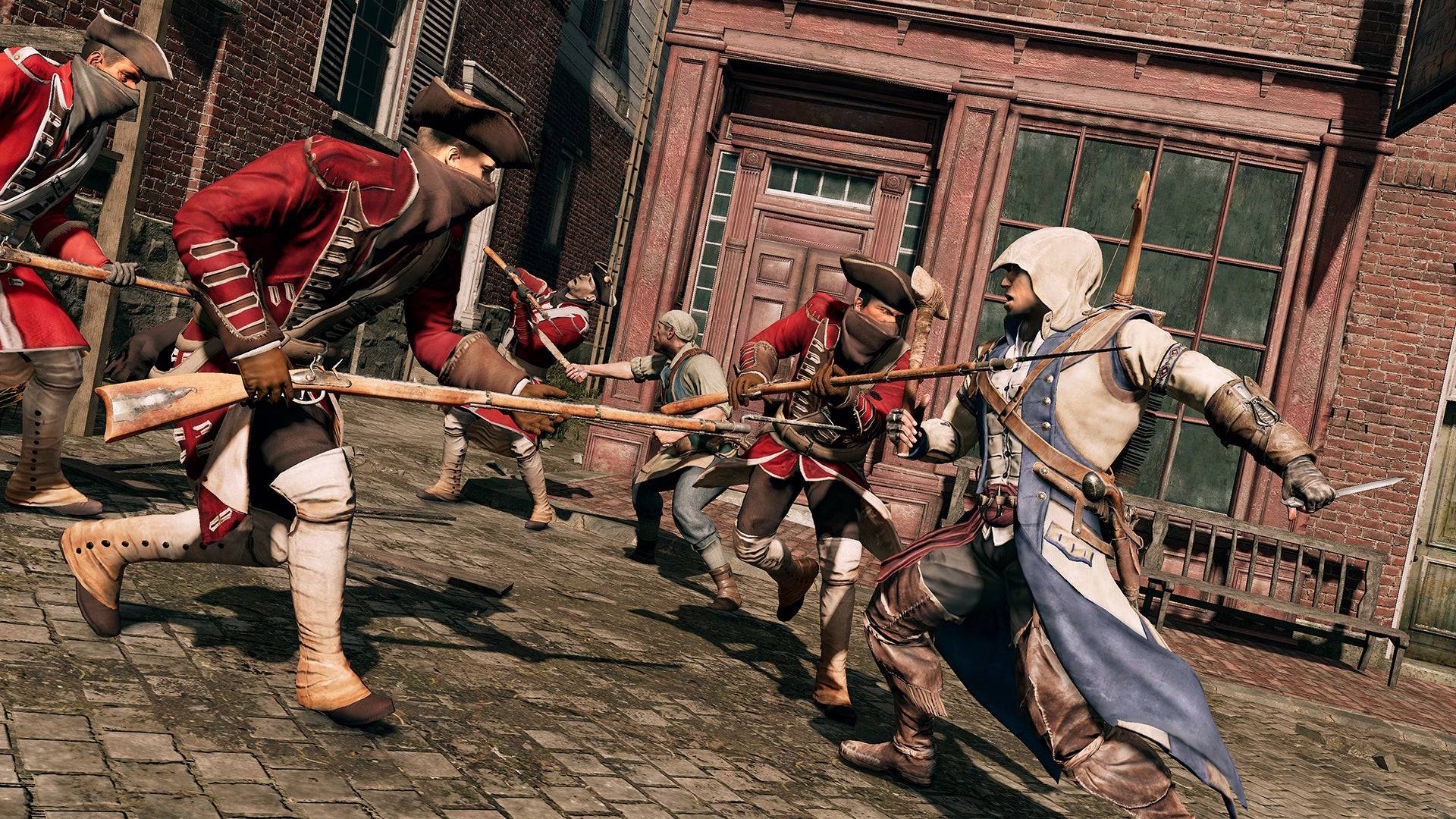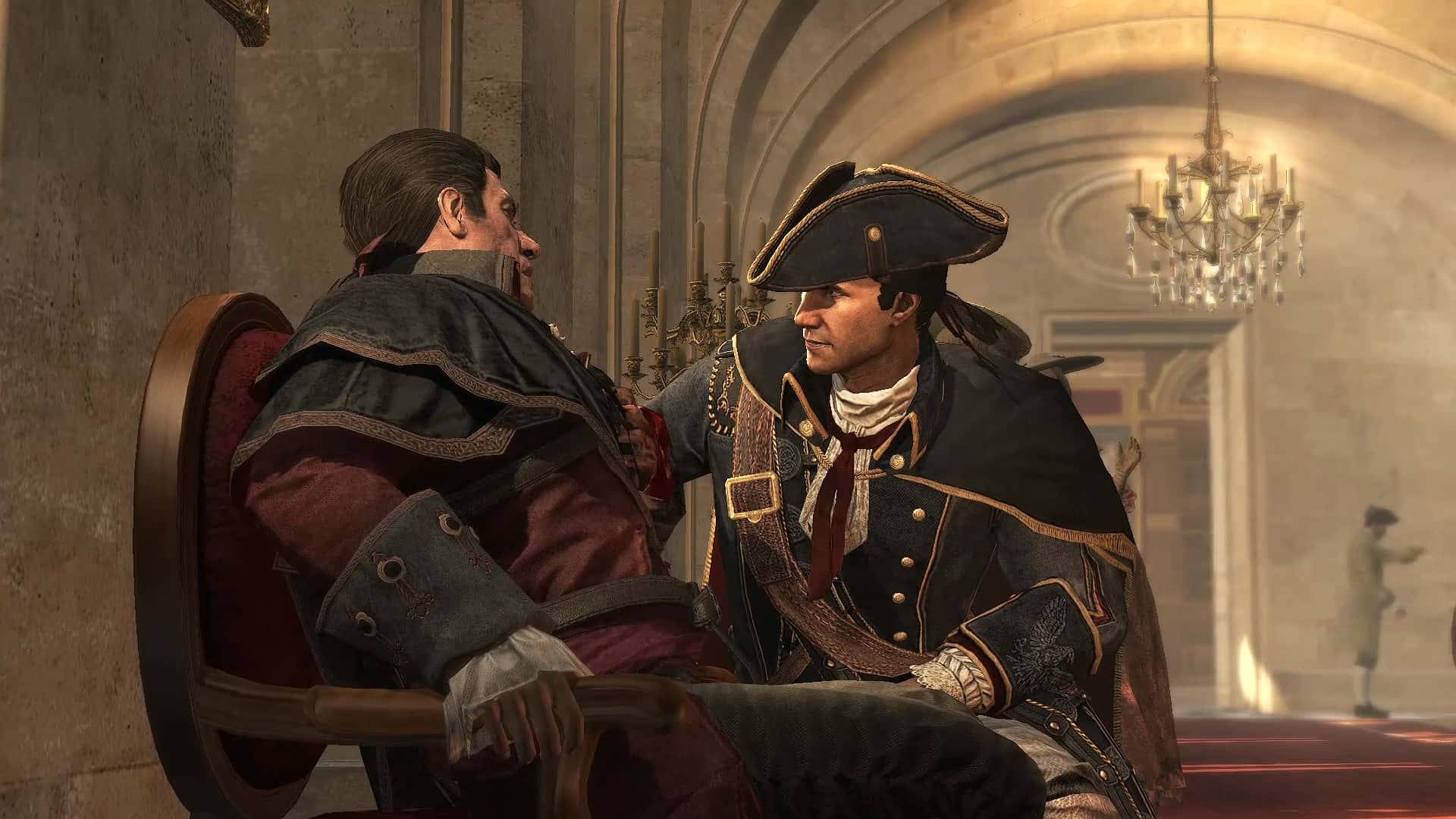One of the most memorable moments in the entire Assassin’s Creed series occurs near the beginning of Assassin’s Creed 3, when Haytham Kenway completes his mission to assemble his team in the New World. Initially, players might believe they are following a group of assassins, given Haytham's use of a hidden blade and his charismatic demeanor reminiscent of previous protagonist Ezio Auditore. Haytham's heroic actions, such as liberating Native Americans from prison and confronting British redcoats, further cement this illusion. However, the revelation comes when he utters the iconic phrase, "May the Father of Understanding guide us," making it clear that players have been unwittingly following the Templars, the sworn enemies of the Assassins.
This surprising twist represents the pinnacle of Assassin’s Creed's storytelling potential. The first game introduced the intriguing concept of finding, understanding, and eliminating targets, but it lacked depth in character development for both the protagonist, Altaïr, and his targets. Assassin’s Creed 2 improved upon this by introducing the more charismatic Ezio, yet still fell short in developing his adversaries, as seen with the underdeveloped Cesare Borgia in Assassin’s Creed: Brotherhood. It was not until Assassin’s Creed 3, set during the American Revolution, that Ubisoft fully committed to fleshing out both the hunter and the hunted. This approach resulted in a seamless narrative flow and a balanced interplay between gameplay and story, a balance that subsequent games have struggled to replicate.
 The underappreciated AC3 features the series' best balance of gameplay and story. | Image credit: Ubisoft
The underappreciated AC3 features the series' best balance of gameplay and story. | Image credit: Ubisoft
Despite the positive reception of the current RPG era of the series, many fans and critics argue that Assassin’s Creed has been on a downward trajectory. The reasons for this decline are debated, with some citing the increasingly fantastical elements like battles against gods like Anubis and Fenrir, or the inclusion of varied romance options and the use of historical figures like Yasuke in Assassin’s Creed Shadows. However, I believe the core issue lies in the series' gradual shift away from character-driven narratives, which have become overshadowed by expansive open-world mechanics.
Over time, Assassin’s Creed has incorporated numerous RPG and live-service elements, including dialogue trees, XP-based leveling, loot boxes, microtransactions, and gear customization. While these additions have expanded the scope of the games, they have also diluted the storytelling experience. The repetitive nature of side missions like tower climbing and object hunting, combined with the sprawling nature of the newer games, has left them feeling less engaging and more superficial.
For example, while Assassin’s Creed Odyssey offers more content than Assassin’s Creed 2, much of it feels less polished and less immersive. The introduction of player choice through dialogue trees and multiple scenarios can theoretically enhance immersion, but in practice, it often results in scripts that feel stretched thin and less focused. The tightly written, screenplay-like narratives of the series' earlier action-adventure era allowed for well-defined characters, unlike the newer games where protagonists must adapt to player whims, often at the expense of character consistency.
This shift has impacted the immersion, making interactions with characters feel more like encounters with NPCs rather than with complex historical figures. The earlier games, particularly those from the Xbox 360/PS3 era, are renowned for their strong writing, exemplified by Ezio’s passionate declaration, "Do not follow me, or anyone else!" after defeating Savonarola, and Haytham's poignant final words to his son Connor:
*"Don't think I have any intention of caressing your cheek and saying I was wrong. I will not weep and wonder what might have been. I'm sure you understand. Still, I'm proud of you in a way. You have shown great conviction. Strength. Courage. All noble qualities. I should have killed you long ago."*
 Haytham Kenway is one of Assassin's Creed's most richly-realized villains. | Image credit: Ubisoft
Haytham Kenway is one of Assassin's Creed's most richly-realized villains. | Image credit: Ubisoft
The narrative quality has also been affected by the simplification of the moral dichotomy between Assassins and Templars in the modern games. Earlier entries, such as Assassin’s Creed 3, went to great lengths to blur the lines between the two factions. Each defeated Templar challenges Connor's beliefs, with figures like William Johnson suggesting the Templars could have prevented the Native American genocide, Thomas Hickey questioning the Assassins' idealism, and Benjamin Church emphasizing the subjective nature of morality. Haytham's attempts to undermine Connor's faith in George Washington further complicate the narrative, culminating in the revelation that Washington, not Charles Lee, ordered the burning of Connor's village.
By the end of Assassin’s Creed 3, players are left with more questions than answers, enhancing the story's depth and impact. This complexity is a stark contrast to the more straightforward narratives of the newer games.
Reflecting on the franchise's history, the enduring appeal of the Jesper Kyd-composed "Ezio’s Family" from Assassin’s Creed 2 underscores the importance of character-driven stories. The melancholic guitar strings of this track were not just meant to evoke the Renaissance setting but to reflect Ezio's personal journey and loss. While I appreciate the expansive worlds and graphical advancements of the current Assassin’s Creed games, I hope the series can return to its roots and deliver the focused, character-centric stories that originally captivated fans. However, in an industry increasingly driven by expansive sandboxes and live-service models, such a return to form may be challenging to achieve.
















